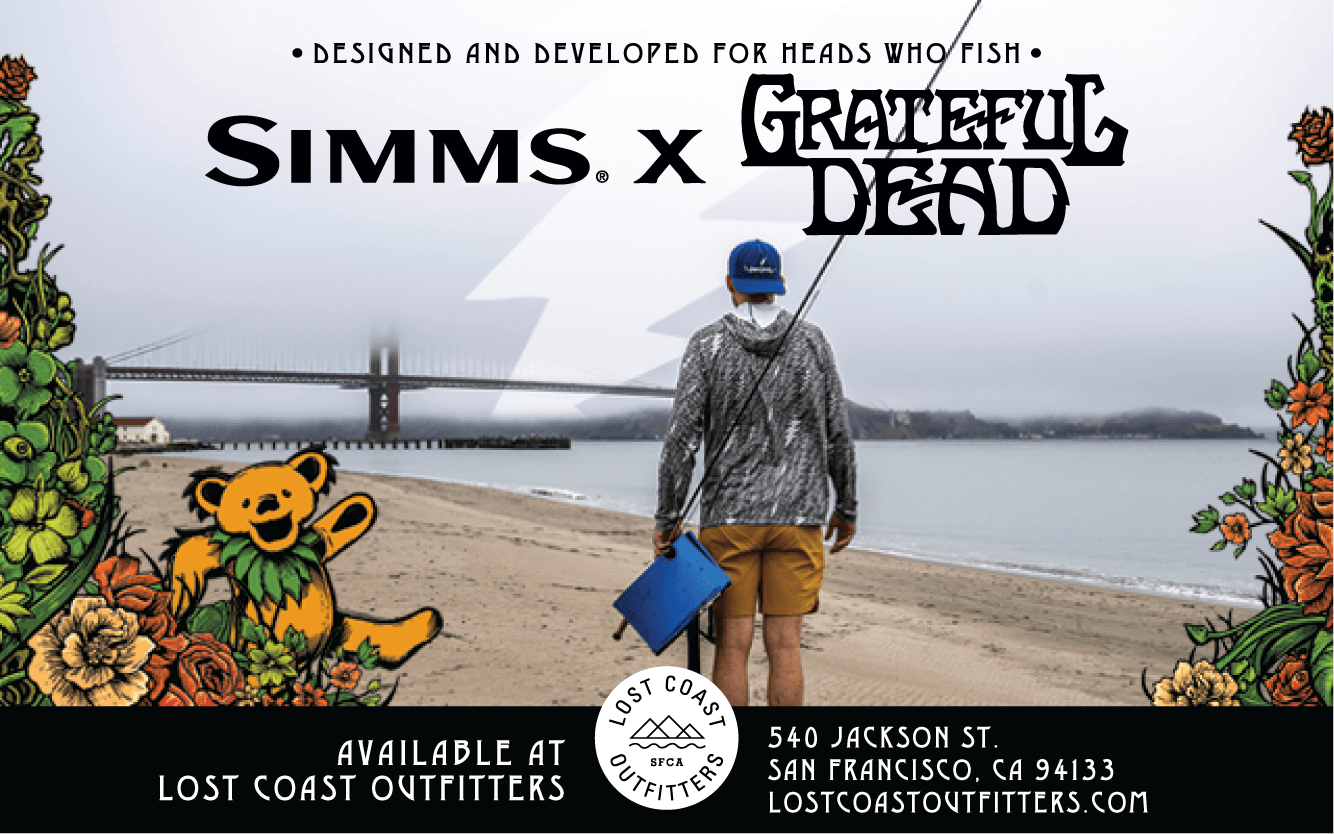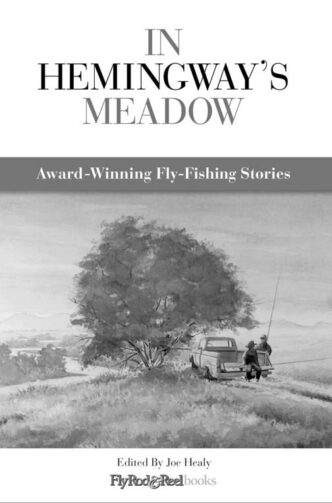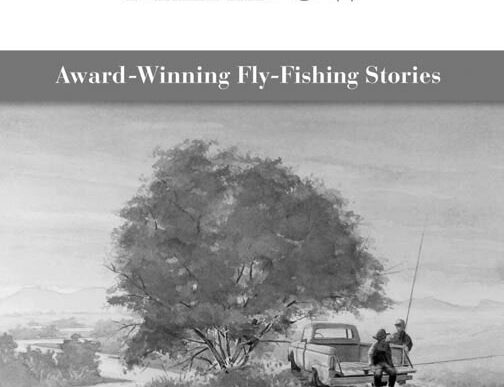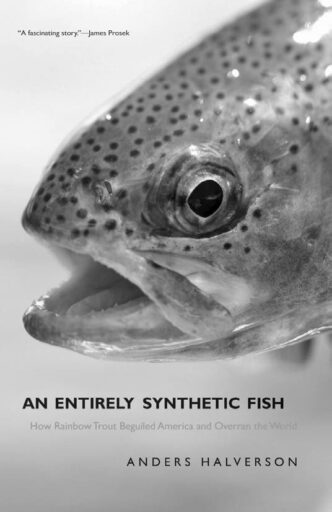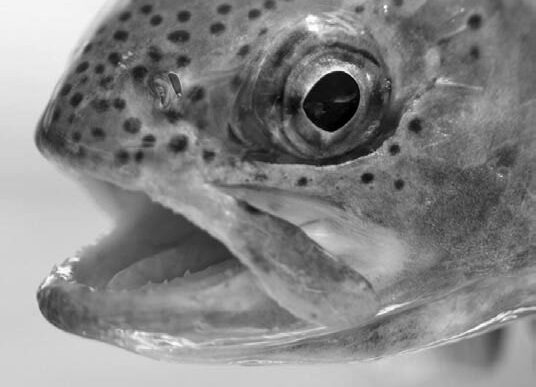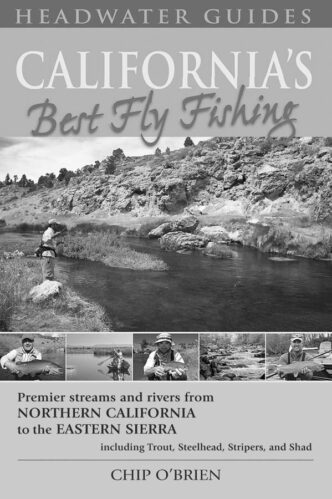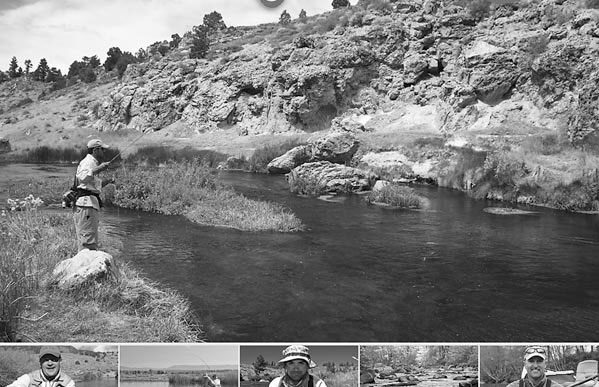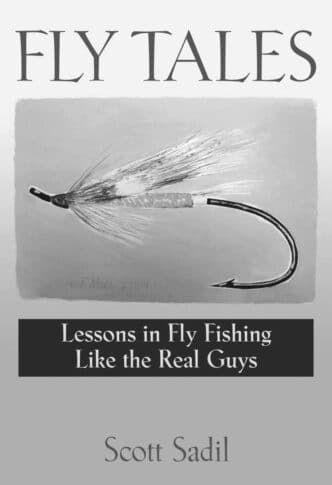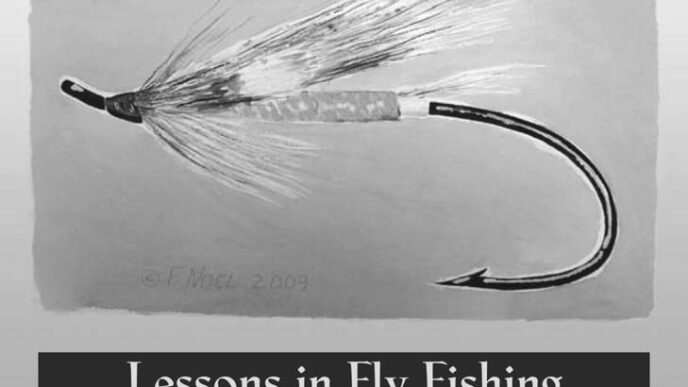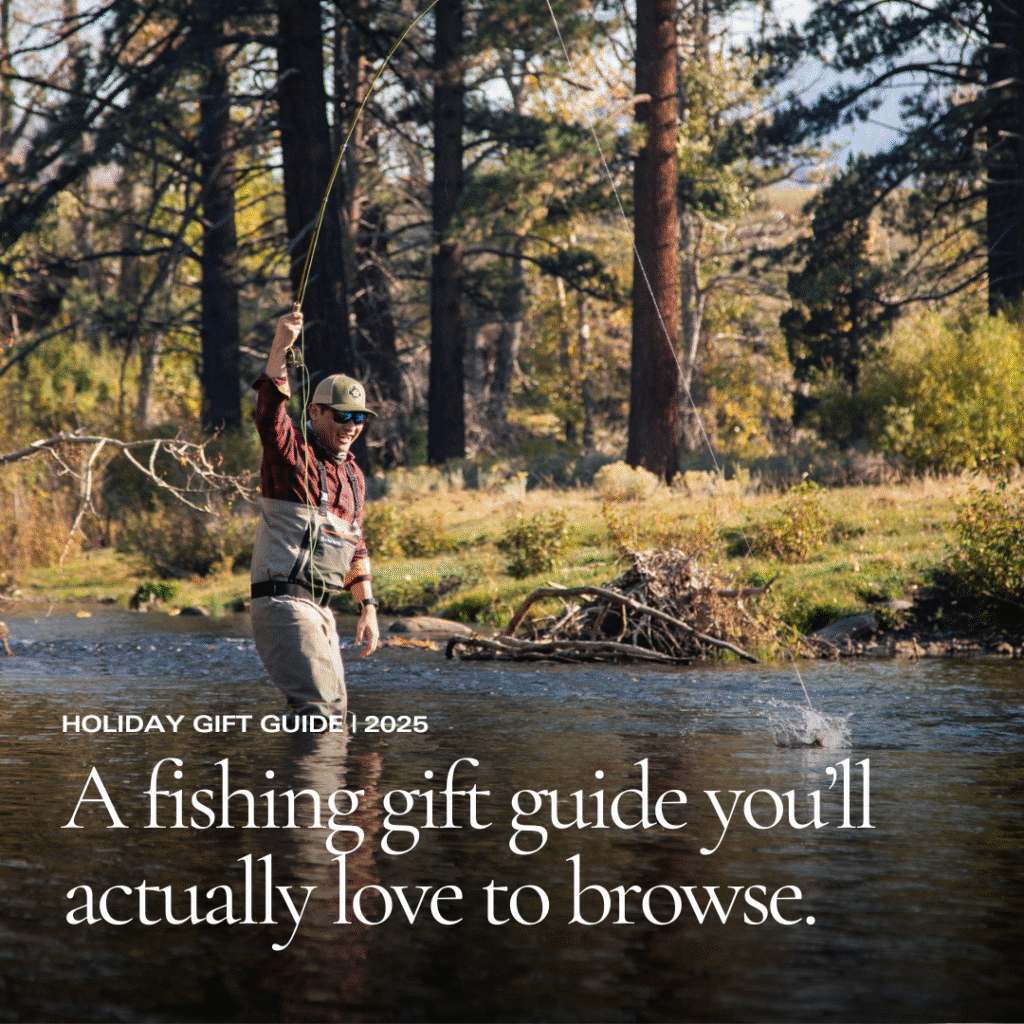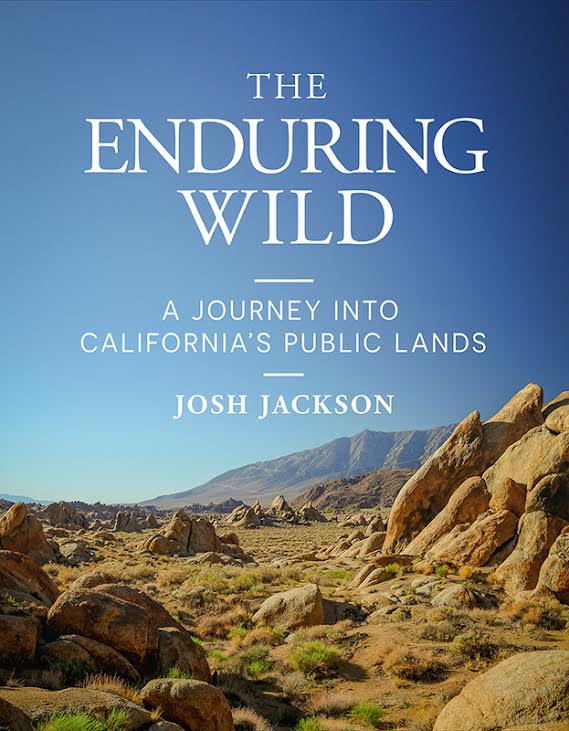
THE ENDURING WILD: A JOURNEY INTO CALIFORNIA’S PUBLIC LANDS
By Josh Jackson
$38, Heyday Books
2025
Reviewed by Sean Stiny
To Read
BLM land. What the hell is it anyway?
We all know it, it’s your land and my land, managed by bureaucrats somewhere back in Washington (or Sacramento). Teddy Roosevelt and the Forest Service are mixed up in it. As is George Bird Grinnell. And certainly Aldo Leopold, the de facto current symbol of conservation. Hell, even old Ed Abbey. But how did it come about and what does it actually mean these days for you and me (and our fly rods)?
Author and custom furniture maker Josh Jackson set out to explore the land marked ‘U.S. Department of the Interior, Bureau of Land Management’ across California. What began with a map pinned to his wall showing all the BLM land in the state turned into his book, The Enduring Wild.
A noble undertaking when life was paused in 2020, he checked the dip stick in his family minivan and headed off to terrain on the California margins, as beautiful and wild and forgotten as it generally is.
Despite our best efforts and our commonplace notions of California, there are wild lands left for the exploring, and plenty of them. In a state bustling with highways and rebar and onlookers, his book, The Enduring Wild, unfurls land that has not be overrun and busted up.
First up is Rainbow Basin Natural Area, a small chunk of land in the Mojave Desert. As it turned out, quite empty, quite infertile, not the most stirring of BLM lands. Along with a sweat logged t-shirt, Jackson remarks “there was no wind, no birdsong, not even distant noise.” Though he does note how he was “awestruck by the sheer scale of barrenness.”
As is often the case with BLM parcels (referred to early on as the “Bureau of Livestock and Mining”), they were forsaken as useless by surveyors and profiteers. “Too unattractive for the National Park Service, too bare for the Forest Service, and too lifeless for the Fish and Wildlife Service.” Thus, the feds took them over, graded a few single tracks, scraped a few campsites, dug a few toilets, and called it unfouled land.
But that’s sort of the point, isn’t it? These aren’t lands we’ve put on the highest pedestals like Joshua Tree or King’s Canyon. Or on the single highest pedestal like Yosemite. But they are no less grand and breathtaking and worth conserving. Land where lonesome meets restorative. And they remind us that wild, true wild, is still out there and attainable, and isn’t always filled to the gills with REI rubberneckers like a Bay Area freeway and not a half dome of granite.
In a subsequent chapter, the author sets out on a mule deer hunt with a friend. An avid outdoorsman but not an avid hunter, Jackson levels,
“I realized that hunters and anglers had their own forms of place attachment to nature and wildlife, and I was keen on broadening my experience.”
They don’t take a muley with a bow, hell, they never even see one. But the pursuit provides him with yet another realization about the bond between us and the land.
Later, Jackson travels to the Elkhorn Ridge Wilderness in Mendocino County and camps along the South Fork of the Eel River with his father. This land, opposite the parched desert where he began, is green and damp and brimming. Black bears abound along with winter steelhead. This is dense forest and cold water within weekend distance from San Francisco. And further north is the Trinity and its wild and scenic steelhead. Lengths of it carve through BLM land as well, as do its silvers.
Included in Jackson’s book are photos of these lands and illustrations of their flora and fauna (a creosote bush for example, a San Juaquin kit fox). The photos aren’t glossy ones from a coffee table book, but real photos (taken by the author) of what you might see at each location. Even their matte finish makes them feel more authentic than, say, a sunset that the photographer waited five hours to capture.
What his book is not, to much appreciation, is a meticulous year-by-year history of the Bureau of Land Management and the politicos who argue incessantly about boundaries and usage. There is an abundance of literature on just that. What it is, thankfully, is an exploration of BLM land right here in California, simply it’s folded hills and teddy-bear cholla, its barred owls and pronghorn antelope.
Jackson began his multi-year quest with a BLM map “hanging in my living room like a beacon, serving as my starting point.” He set out to document real experiences and observations in each location and to capture an authentic feeling for each swath of BLM land and why they are worth setting aside.
And each of us can have our own experiences on these public lands, because after all, we own ‘em. All that’s required is a couple jugs of water, a full tank of gas, and perhaps a Rand McNally road atlas. And a curiosity for the landscape, perhaps a slight thirst for adventure.
While Teddy declared “leave it as it is,” Jackson declares “lands once overlooked and undervalued possess a profound strength and beauty worth fighting for.”
For more information on author Josh Jackson and BLM-managed public lands, visit: Forgotten Lands Project
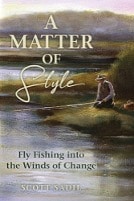
A MATTER OF STYLE
By Scott Sadil
$24.95, Stackpole Books
2025
Reviewed by Sean Stiny
Solitary is the fly fisher, even with fishing compadres just around the bend. Trying to work out a run or a bank or a deep hole, and its trout inhabitors.
More solitary is the fly-fishing writer, trying to spin a tale or a yarn or an escapade from memory. Constructing the lesson learned or plot foiled by a wizened old rainbow who couldn’t be bothered to rise to any old parachute Adams.
Scott Sadil, fly tyer emeritus for California Fly Fisher, has collected a lifetime of these yarns and angling lessons, enough to fill his book, A Matter of Style, Fly Fishing into the Winds of Change. He gives up anecdotes on angling, doing things other than angling, and just plain wishing he were angling. Included are tales of busted rods, pain-in-the-ass boats (but not his Madrina), befuddled fishing buddies, and the cast and the mend and the repose of the river.
He pens: “You can do a lot worse in life, of course, than having a remote mountain stream loaded with eight to 12-inch trout all to yourself.”
Accounts of the landscape in which he fishes are splendid, too. “The steep canyon walls rise crusty with blackened trees. Along the trail, tangles of snags and standing dead creak and moan with each faint breath of morning breeze.”
Most angling writers seem to recount stories from memory, from time spent on the water or at the watering hole after the evening bite. But Sadil writes like he’s fishing and writing at the same time, like he’s jotting notes between casts. It’s refreshing and a wee bit more tactile than most angling books. For instance, he notes:
“I tilt the rod and lift the nail knot and see in silhouette against the fading sky that, yep, sure enough, there’s no longer a little wet caddis on one of the tag ends of my blood knot.”
When he details shaping a wading staff out of a piece of leftover sapele (a beautifully tight-grained type of mahogany), well, he’s speaking directly to me and my woodworking self. This is in response to the need for a wading staff now in his, let’s say, mature years.
“There’s a cost to every change.
As the sun sets beyond the southern rim of the canyon, I sense a connection between changes ahead … and my begrudging willingness to accept a stick as a tool for hunting whitewater rainbows.”
The winds of change Sadil references are many. The dams (though a few have come down) and the destruction of habitat, like the redwood forests along the Lost Coast of northern California.
Yet Sadil still fishes and travels the west and weighs his impact on the water and soil and salmonids. He’s most appeased fishing for “redsides” (rainbows) or on Madrina, his “little beach yawl” in Baja for triggerfish and palometa, or whatever snapper or grouper is cruising for lunch.
In the eponymous story, A Matter of Style, Sadil recalls choosing the right fly for big browns in Patagonia. Browns as “big around as a sprinter’s thigh.”
Your flies, your Chernobyl Ants and homemade Woolly Buggers, your casting technique, your gear, your rod, your approach to the angling discipline. Are you loose or tense, persnickety or jovial, focused or aloof? It’s all a matter of style. Even the right amount of buffoonery in the out of doors can be tolerable, amusing even. It’s all copacetic as long as you respect the water and the trout and your fellow anglers.
A few of Sadil’s stories elicit a ‘better him than me,’ but most evoke a ‘damn, I wish I was there.’ Sadil confides: “You fish long enough, you learn to tell yourself all sorts of stories, some of them truer than others. Then I come up tight on something heavy—and I’m pretty damn sure I’ve got another one to share.”
So here’s to more yarns and more fish, Scott. We’re all the better anglers for them.
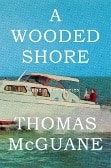
A WOODED SHORE
By Thomas McGuane
$27, Penquin Random House
2025
Thomas McGuane’s The Longest Silence might as well be the fly-fishing Bible. The New Testament anyway. It’s passed down from angler-father to angler-son, is required reading before you reach angler maturity (around 65, I’d say).
He, too, is a master of short fiction. His characters are odd, his scenes peculiar, his prose winding. His latest is A Wooded Shore, a collection of nine short stories that fuse, well, odd characters in peculiar scenes.
It’s a concise one, under 200 pages. In the eponymous story, Fred Latham and his family float about on a decrepit river yacht in a small tributary of an unnamed Great Lake. He and his inevitable ex-wife squabble with boaters, each other, lose a toddler bobbing downriver in a life jacket, and generally cavort and complain. Each of their lives goes downhill from there, and fast.
The characters are strange, their lives are stranger, and McGuane writes it all with clarity and tact. While not up there with The Longest Silence in both its fishing tales and inscrutable characters, you’ll finish each story in A Wooded Shore with a resounding “good riddance to those poor bastards.”
McGuane is the last of the Montana-in-summer, Key West-in-winter, fry up a woodcock, drink down a bottle of Côtes du Rhône then clear the deck for a shindig writers. He’s on the Mt. Rushmore of angling writers alongside John Gierach, Nick Lyons, and Jim Harrison. High praise, sure, but McGuane is among the crème de la angler-writing crème.
And forget the fly rod literature for a moment, he’s in fact amongst the outdoor greats alongside, dare I list them, Norman Maclean, Hemingway, and again, our beloved Jim Harrison. A more apt monument for them than Mt. Rushmore, their faces carved into boulders along the banks of the Madison.
Still fishing and writing, McGuane is the scribbler emeritus of fishing tales. Now, 85, there’s no telling how many more tales we’ll get out of him. Savor his words and his characters respectively, even when they make you blurt a “sweet Jesus” as you read ‘em.
A new McGuane book should make every literary angler perk up, like a brown trout rising just beyond your Elk Hair Caddis. So, consider a slight sojourn from another thick-as-a-brick WWII book, and read a little Montana lit. It won’t hurt none, might even be nice to read about some other lousy bastards for a change.
To Watch
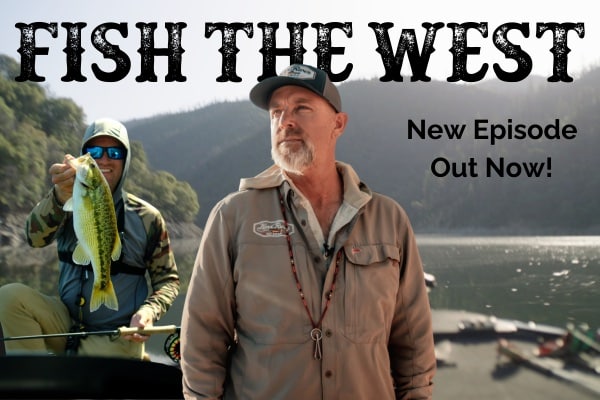
FISH THE WEST FILMS
Director/Producer Devan Homis
Host/Producer Guy Jeans
Available on YouTube at Fish the West Films
Fish the West Films delivers a fresh and authentic perspective on fly fishing in the American West. Guided by a passion for the sport and produced with cinematic care, the series highlights the people, places, and culture that make fly fishing more than just a pastime—it’s a way of life.
The debut episode, The Still Water Visionary: Ryan Williams, sets a high bar. In the clear waters of Lake Oroville, Williams demonstrates how creativity and persistence can transform stillwater bass fishing with a fly rod. His custom fly designs and innovative techniques showcase both the potential of untapped fisheries and the ingenuity that drives the sport forward.
Future episodes promise even more for California anglers, with appearances from CAFF’s own George Revel, along with contributors Dagur Gudmundsson and Glenn Ueda. Their stories, alongside those of renowned anglers like Vaughn Podmore and Pat Jaeger, will broaden the series’ reach while keeping the spotlight on the unique character of Western waters and those who fish them. California Fly Fisher is proud to be a partner in Season 1, helping bring these stories to the community we serve.
Fish the West Films is a thoughtful, well-crafted series that feels both personal and universal—rooted in the craft yet expansive in vision. For anyone passionate about fly fishing, it’s a compelling watch.





